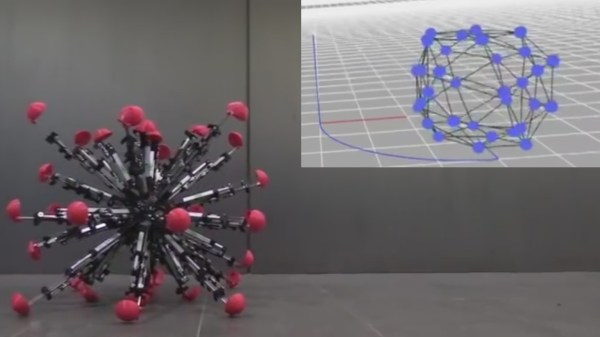We have heard bipedal walking referred to as a series of controlled falls, or one continuous fall where we repeatedly catch ourselves, and it is a long way to fall at 9.8m/s2. Some of us are more graceful than others, but most grade-schoolers have gained superior proficiency in comparison to our most advanced bipedal robots. Legs involve all kinds of tricky joints which bend and twist and don’t get us started on knees. Folks at the Keio University and the University of Tokyo steered toward a robot which does not ride on wheels, treads, walk or tumble. The Mochibot uses thirty-two telescopic legs to move, and each leg only moves in or out from the center.
Multi-leg locomotion like this has been done in a process called tensegrity, but in that form, the legs extend only far enough to make the robot tumble in the desired direction. Mochibot doesn’t wait for that controlled fall, it keeps as many downward-facing legs on the ground as possible and retracts them in front, as the rear legs push it forward. In this way, the robot is never falling, and the motion is controlled, but the processing power is higher since the legs are being meticulously controlled. Expecting motion control on so many legs also means that turns can be more precise and any direction can become the front. This also keeps the nucleus at the same level from the ground. We can’t help but think it would look pretty cool stuffed into a giant balloon.
Some people already know of tensegrity robots from NASA, but they may not know about the toolkit NASA published for it. Okay, seriously, how did knees pass the test of evolution? I guess they work for this jumping robot.












